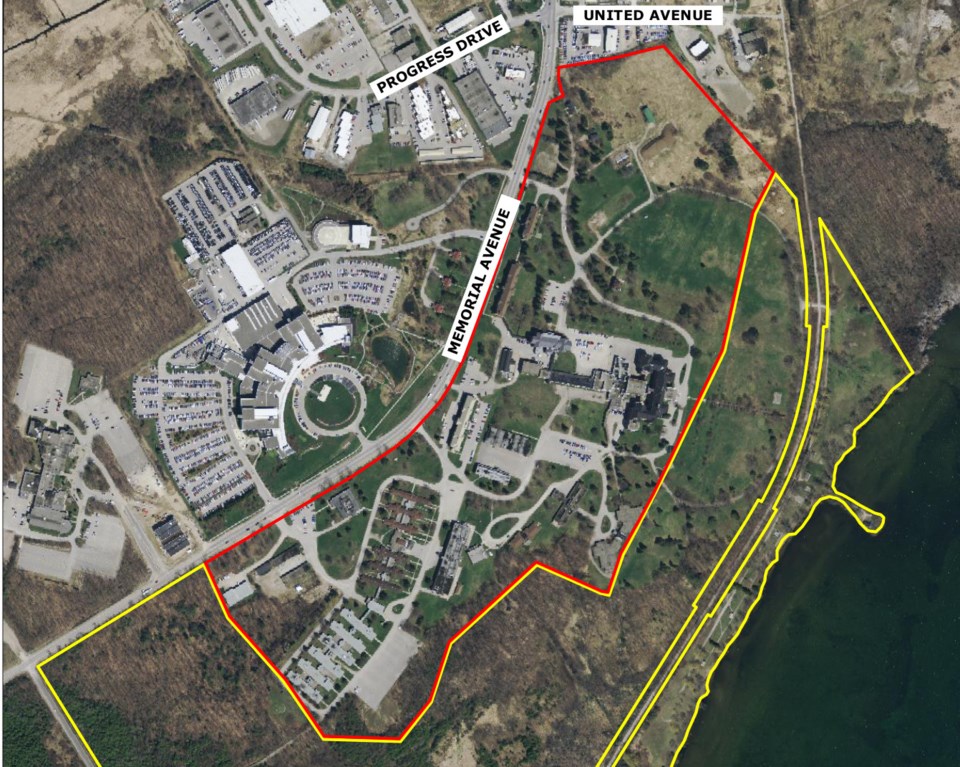The province announced last week it is selling off hundreds of vacant surplus properties in a bid to create more affordable housing and long-term care spaces, while saving lots of money.
Unfortunately, the Huronia Regional Centre (HRC) property is not on the list – yet.
Simcoe North MPP Jill Dunlop told OrilliaMatters that the HRC property was the first thing that came to mind when she learned of her government’s plan.
“Believe me, when I heard about this, all I could think of was the HRC,” said Dunlop. “People have been begging for that property.”
Dunlop said the province plans to sell 486 vacant/unused properties by 2022. The first wave of the program, announced last week, included 243 properties.
“I was really hoping the HRC would be on the list, but, at least right now, it’s not,” said Dunlop.
She said she has reached out to the Ministry of Government Services to find out why and to see when it might be made available.
When MPPs were briefed on the new initiative, officials used a long-abandoned OPP detachment in Bracebridge as an example of the type of property targeted in the first wave.
“My understanding is it’s about readiness for sale,” said Dunlop, who noted that property north of Orillia has been vacant for almost a decade. During that time, the government has paid for maintenance, kept the furnace running in the winter to ensure pipes don’t freeze and looked after other costs.
“The cost for all that, on that one building, has been about $1.5 million,” said Dunlop.
While the cost for maintenance of the sprawling HRC property would be exponentially higher, it is a more complicated piece of property.
While many of the buildings on the picturesque lakeside site have been abandoned since the province shuttered the facility in 2009, the OPP has repurposed some of the buildings and there is also a courthouse on the site.
Despite those factors, Dunlop said she will push the merits of selling the property.
“I do think it’s a good idea,” she said. “It would be amazing for our area, for economic development of the community. I know there are a lot of interested groups. The Huronia Cultural Campus (HCC) has been doing a lot of work to try to obtain the property.”
That group is hoping to transform the former HRC property into the Huronia Cultural Campus, a vision first advocated by renowned artist Charles Pachter, who now calls Orillia home.
First envisioned as a centre for innovation and art, the idea has expanded and matured and attracted the support of business and cultural leaders, from Orillia and further afield.
Their vision has increased; they believe the site could house an outdoor performance space, sculpture gardens, live/work space for artists and housing for retired artists, and down the road, galleries, a Canadian Folk Music Hall of Fame, conference spaces, and potentially even a culinary institute.
Fred Larsen, chair of the HCC, said he was not surprised the property did not make the list. But he remains hopeful the HCC can, eventually, obtain the coveted property.
"After four years of talks, the vision remains alive and well," said Larsen. "We are still very interested in the property and still think it could be a jewel. What we proposed is still viable."
Larsen and other HCC champions met in the fall with Dunlop and Barrie-Springwater-Oro-Medonte MPP Doug Downey. He believes the politicians understand the HCC vision and are willing to help.
"The next step is to connect with the 'new' Orillia city council and we're hoping, early in 2019, to set up a meeting with Bill Walker, the Minister of Government and Consumer Services.
"We have always known this is a long-term process," said Larsen.
It has certainly been that.
The previous Liberal government spearheaded a public consultation process on the property in 2016; it focused on the best use of the surplus land.
The report, released in 2017, gave a concise snapshot of the property, which comprises about 260 acres of government-owned and managed land that skirts Lake Simcoe.
From 1876 to 2009, it was the site of the HRC and a facility for developmentally delayed adults.
Since then, some pockets of the property have been used as a courthouse, public health lab and the site of OPP training facilities and trainee residences.
About 175 acres of the provincial land is not being used. But much of it may never be used.
The report says about 132 of the 175 acres is comprised of wetlands and should be under permanent protection. The report also concluded the property should remain in the public domain, should be accessible year-round and should somehow recognize the pain of the HRC residents through a memorial.
Those factors make the property more challenging.
The press release from the provincial Progressive Conservative government says the first phase of their plan to sell surplus properties and cut tape could generate up to $135 million in revenue over four years.
"Ontario currently has hundreds of vacant surplus properties across the province, costing the government millions of tax dollars a year to maintain," said Bill Walker, Minister of Government and Consumer Services. "Our plan is about working harder, smarter and more efficiently so we can reduce costs, generate much needed revenue and make life better for the people of Ontario."
The release says the new plan will more easily identify which properties could be used for affordable housing and long-term care projects. Additional government departments and levels of government can also benefit from reduced red tape so that identified properties can be efficiently put back to productive use in communities across Ontario.
